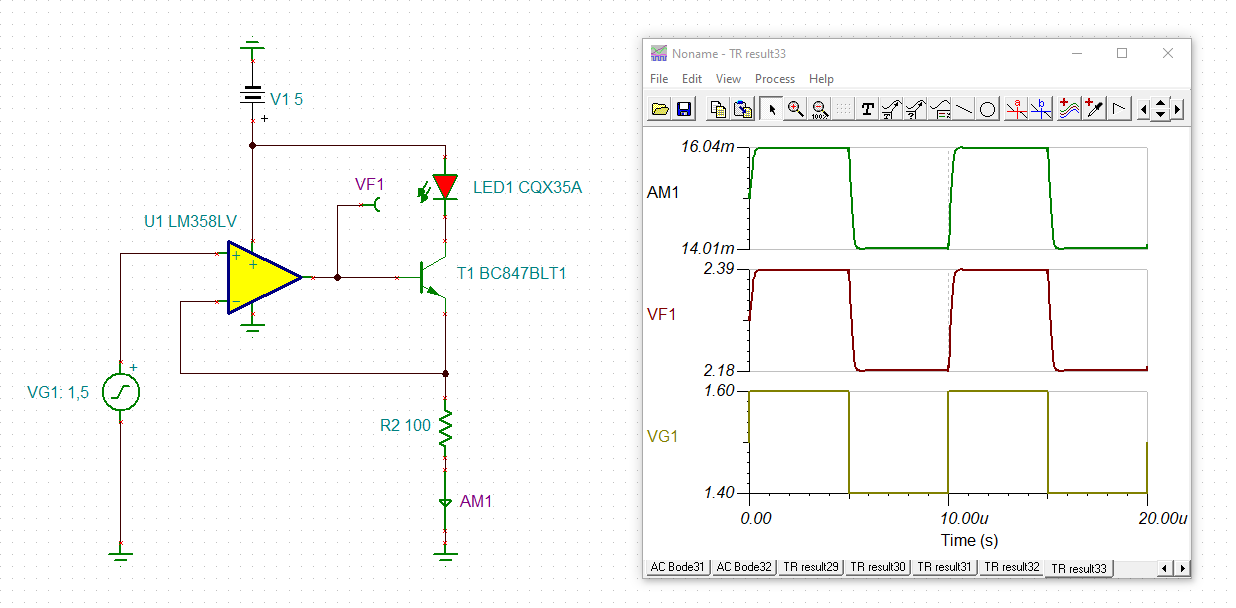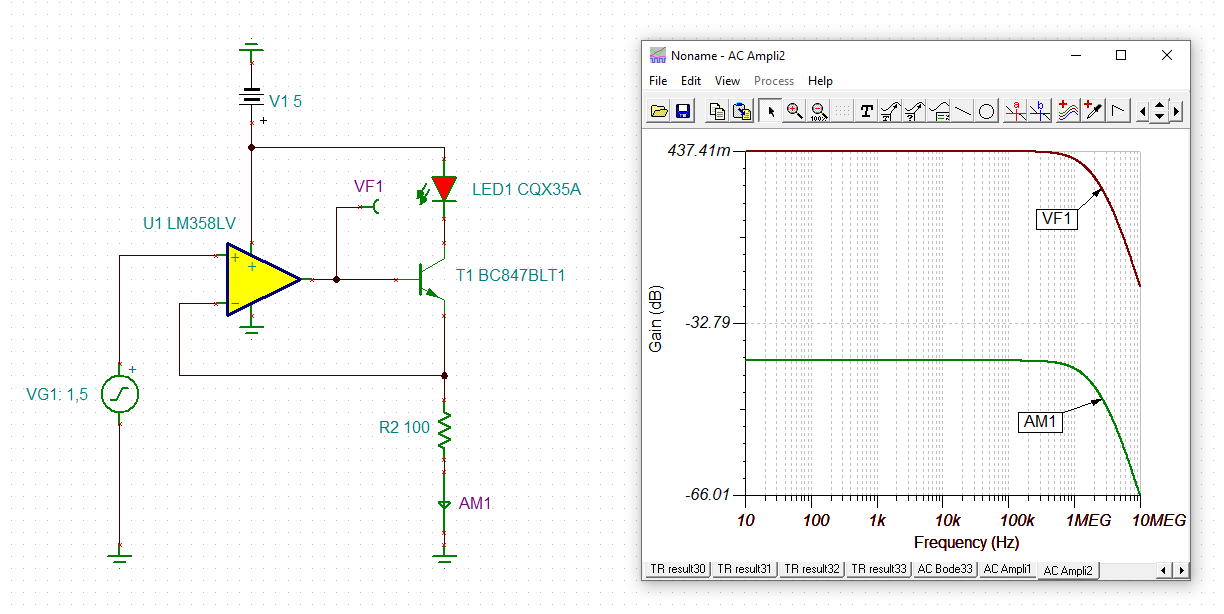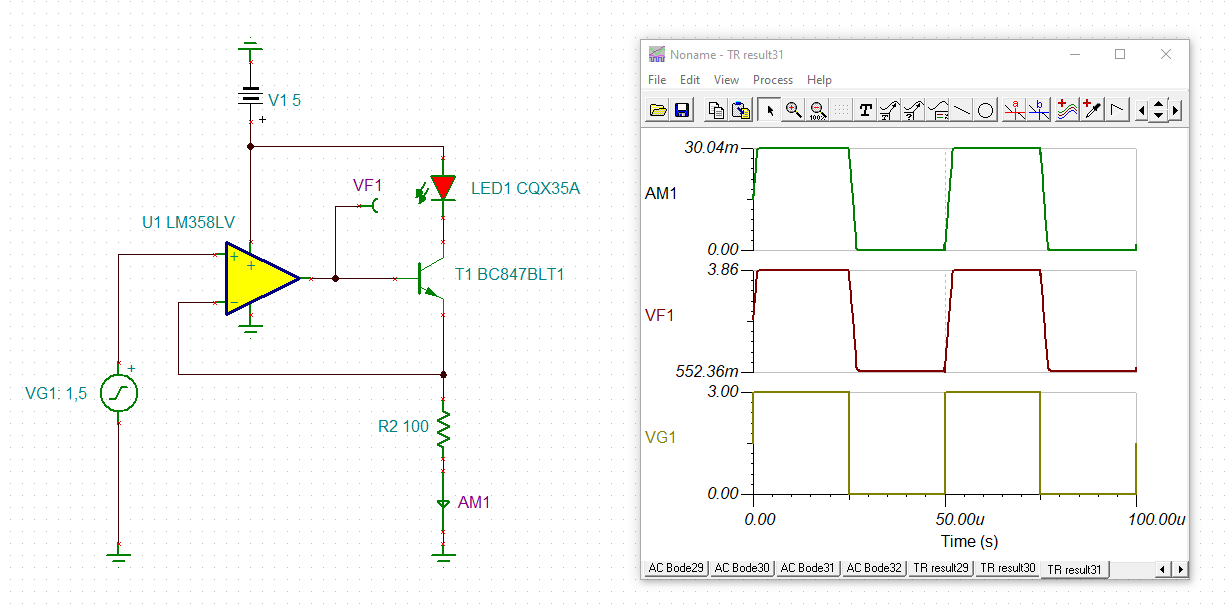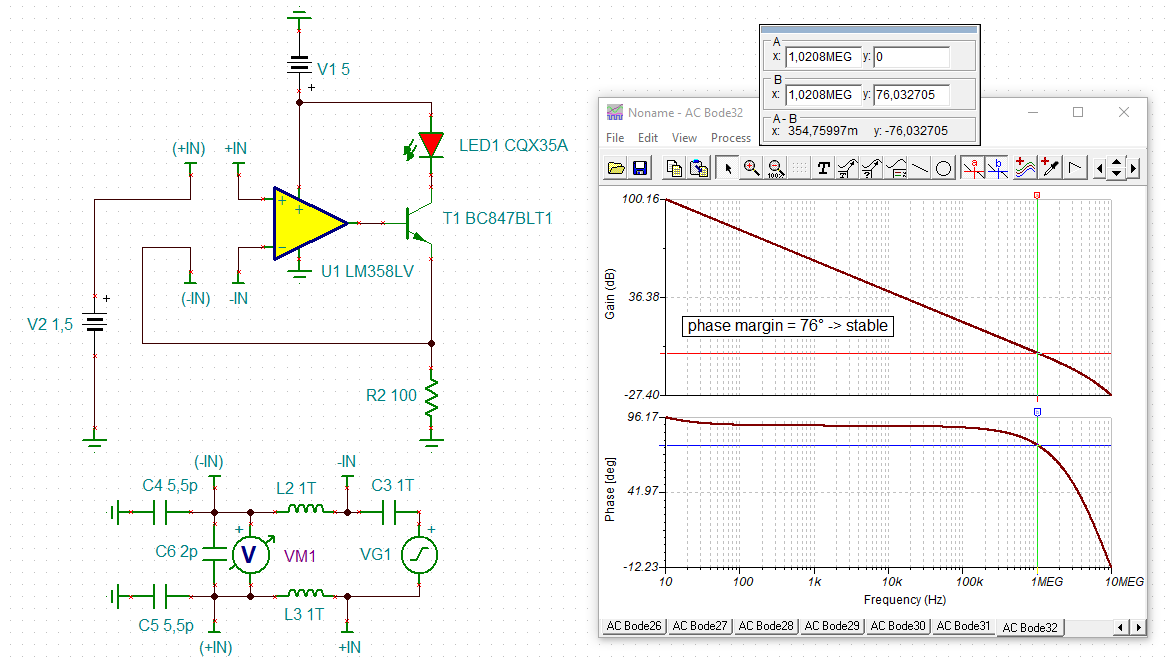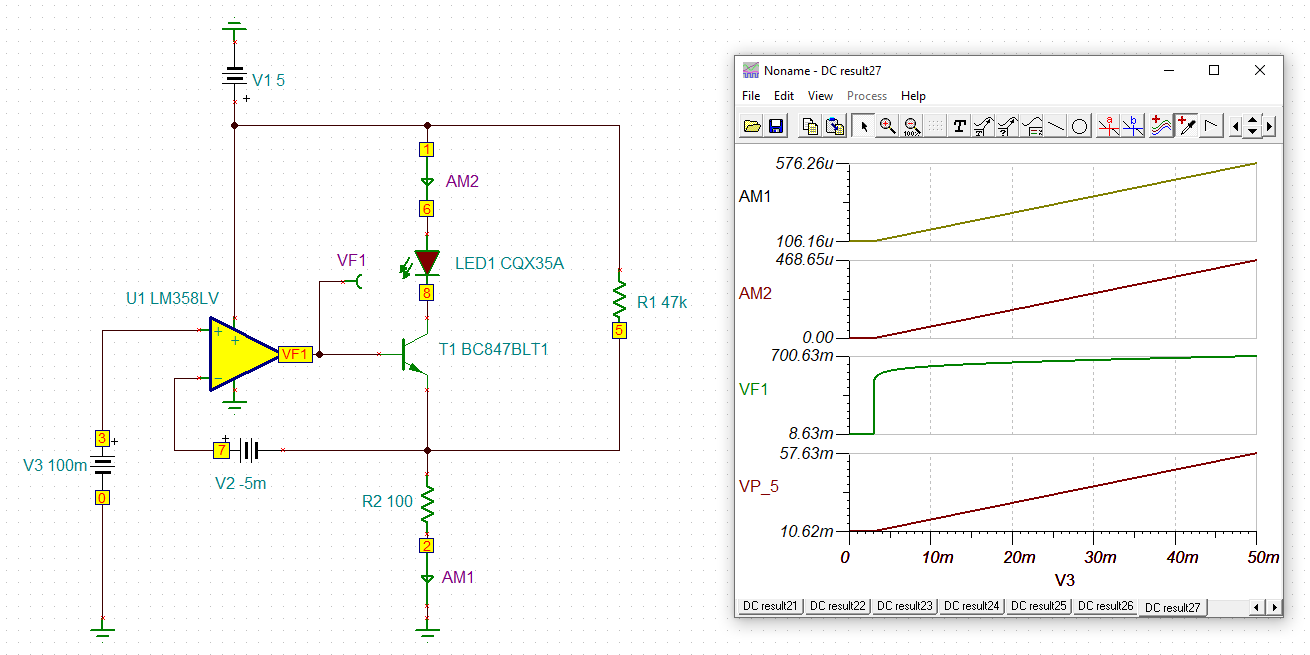Other Parts Discussed in Thread: LMV2011,
Hello,
I designed current source circuit for LED.
I didn't understand how it works.
I changed only the OP AMP in the same circuit, but the simulation operation does not work with the LM358.
Is something wrong with this circuit?
Is it better to drive LEDs with NPN than PNP?
1. LMV2011
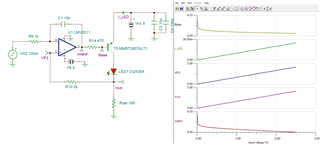
2. LM358
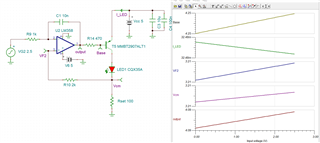
Please help me.


